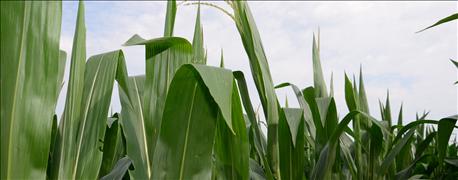
According to the maps issued from the National Oceanic and Atmospheric Administration’s Climate Prediction Center in late spring, Indiana is expected to experience above-normal temperatures during the month of July. Ken Scheeringa, assistant state climatologist, says the forecast should be taken for what it is, and not exaggerated beyond that point. For precipitation, there is an equal chance that Indiana will be above-normal, normal or below-normal.

HOW HOT IS WARMER THAN NORMAL? Will weather be favorable once tassels emerge in July? All climatologists see right now is that there are increased odds of warmer-than-normal weather.
For example, the maximum temperature in northwest Indiana averages 83.8 degrees in July, when all days within the month are averaged together. That is based on 30 years of data. Warmer-than-normal could be 1 degree above, or 84.8 degrees F. That may or may not have any effect on corn pollination, depending on when the warmest days come and how hot the driest days actually are when the weather arrives.
One thing long-range climatologists can’t predict, he notes, is extremes. What happened in 2012 was extreme, with temperatures — especially during late June through mid-July— averaging many degrees above normal over much of the state.
Jim Newman, a retired longtime climatologist, always insisted that there is value to long-range forecasts, and they are getting better all the time. However, he always added that even with today’s technology, it’s not possible to see conditions that extreme in advance. What climatologists hope to do is zero in on the trend —which, in this case, would be warmer than normal.
Fuzzy crystal ball
For all the talk about El Niño and La Niña earlier this year, it is still unclear at this point what that might mean for rainfall patterns across Indiana this summer — if it means anything at all. The picture is still uncertain.
The same maps that predicted warmer-than-normal temperatures were neutral on rainfall. What that really means, Scheeringa says, is that there are equal chances of below-normal, above-normal and normal precipitation. Stay tuned for further updates on the summer weather forecast picture when it comes into sharper focus.

About the Author(s)
You May Also Like




